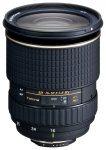Announced
Production status
Original name
Pros and cons
- Not 15mm at the wide end (Canon EF-mount version)
- Not 16mm at the wide end (Nikon F-mount version)
- Fast speed
- Constant F/2.8 speed across the focal length range
- Aspherical design
- Internal focusing (IF)
- No manual focus override in autofocus mode
- Vibration Compensation (VC) (up to 4 stops)
- Not weather-sealed
- No fluorine coating
Genres or subjects of photography
Recommended slowest shutter speed when shooting static subjects handheld
Tamron SP AF 17-50mm F/2.8 XR Di II VC LD Aspherical [IF] B005
Standard zoom lens • Digital era • Discontinued
Abbreviations
| SP | Professional lens with high quality optics and robust build. Meets the highest standards and provides excellent performance and flawless image quality unachievable with traditional optical technologies. |
| XR | The lens incorporates high refractive index elements. |
| DI II | The lens is designed for APS-C digital SLR cameras only. |
| VC | The lens is equipped with Vibration Compensation system. |
| LD | The lens incorporates low dispersion elements. |
| [IF] | Internal focusing. |
Model history
| ■Tamron SP AF 17-50mm F/2.8 XR Di II LD Aspherical [IF] A16 | A | 16 - 13 | 0.27m | ⌀67 | 2006 ● | |
| Tamron SP AF 17-50mm F/2.8 XR Di II LD Aspherical [IF] A16N II | 2008 ● | |||||
| ■Tamron SP AF 17-50mm F/2.8 XR Di II VC LD Aspherical [IF] B005 | A | 19 - 14 | 0.29m | ⌀72 | 2009 ● | |
Specification


| Optical design: | |
| 17mm - 50mm [2.9X zoom ratio] | |
| F/2.8 across the focal length range | |
| APS-C | |
| Canon EF [44mm] | |
| Nikon F [46.5mm] | |
| 77.3° @ 17mm - 30.4° @ 50mm (Canon EOS APS-C) | |
| 79.5° @ 17mm - 31.6° @ 50mm (Nikon D APS-C) | |
| 19 elements in 14 groups | |
| 3 ASPH, 2 XR, 2 LD | |
| Internal focusing (IF) | |
| On Canon EOS APS-C [1.59x] cameras: | |
35mm equivalent focal length range: | 27mm - 79.5mm (in terms of field of view) |
35mm equivalent speed range: | F/4.5 (in terms of depth of field) |
| On Nikon D APS-C [1.53x] cameras: | |
35mm equivalent focal length range: | 26mm - 76.5mm (in terms of field of view) |
35mm equivalent speed range: | F/4.3 (in terms of depth of field) |
| Diaphragm mechanism: | |
Diaphragm type: | Automatic |
Aperture control: | None; the aperture is controlled from the camera |
| 7 (seven) | |
| Zooming: | |
Zoom mechanism: | Manual |
Zoom control: | Zoom ring |
Zoom type: | Rotary |
Zooming method: | Extends while zooming |
Additional features: | Zoom lock |
| Focusing: | |
| 0.29m | |
| 1:4.8 @ 50mm | |
Focusing modes: | Autofocus, manual focus |
Autofocus motor: | Micromotor |
Manual focus control: | Focusing ring |
Focus mode selector: | AF - MF |
Manual focus override in autofocus mode: | - |
| Vibration Compensation (VC): | |
| Yes | |
VC features: | Mode 1 |
| Panning Detection | |
| up to 4 stops @ 50mm | |
| Physical characteristics: | |
| 570g (Nikon F) | |
| ⌀79.6×94.5mm (Nikon F) | |
| - | |
| - | |
| Accessories: | |
| Screw-type 72mm | |
| AB003 - Bayonet-type petal-shaped | |
| Not available |
Source of data
- Manufacturer's technical data.
Manufacturer description
TAMRON LAUNCHES FAST SP AF17-50MM WITH VIBRATION COMPENSATION FOR NIKON DX-FORMAT DSLRS
Groundbreaking high-speed, high-definition f/2.8 standard zoom features Tamron's Vibration Compensation (VC) image stabilization mechanism
September 1, 2009, Saitama, Japan— Tamron Co., Ltd. announced the release of the SP AF17-50mm F/2.8 XR Di II VC LD Aspherical [IF] (Model B005NII), a high speed f/2.8 wide-to-moderate-telephoto zoom lens designed exclusively for Nikon-mount digital SLR cameras with smaller sensors. Featuring Tamron's proprietary tri-axial Vibration Compensation (VC) mechanism that minimizes the effects of handheld camera shake, the lens will be available starting on September 17, 2009 in Japan. Tamron plans to introduce the lens in a Canon mount version shortly after the new Nikon mount version with built-in motor hits the market.
The new SP 17-50mm F/2.8 XR Di II VC covers the very popular 17-50mm focal length range (equivalent to 26-78mm in the full-frame 35mm format) making it extremely versatile. Its wide aperture and outstanding performance provide practical advantages in low-light shooting and aesthetic image control, thereby enriching the user's range of creative expression. The new lens delivers impressive sharpness and striking contrast over its entire focal-length and aperture range, and at its maximum aperture of f/2.8 it produces beautiful images enhanced by shallow depth of-field, and smooth, natural transitions in out-of-focus areas of the image (i.e. excellent bokeh.) The new lens is equipped with Tamron's proprietary Vibration Compensation (VC) image stabilization mechanism, which controls the effects of camera shake in three planes. VC provides more opportunities for sharp hand-held photography at the slow shutter speeds needed when shooting in low-light conditions (e.g. night or indoor scenes) dramatically enhancing the user's level of photographic freedom.
Di II lenses are designed exclusively for use with digital SLR cameras (equivalent to APS-C size), and employ an optical system optimized for the characteristics of those cameras. Di II lenses are not designed for use with digital SLR cameras with image sensors larger than APS-C size or 35 mm film SLR cameras.
MISSION ACCOMPLISHED
The previously announced, still currently available Tamron SP 17-50mm F/2.8 XR Di II (Model A16) boasts superlative optical performance for a fast standard zoom lens and has been acclaimed world-wide as a masterpiece of compact optical design. In developing the new Tamron SP 17-50mm F/2.8 XR Di II VC zoom, the primary goal was to maintain this incredible compactness and ease-of-use while simultaneously enhancing its convenience and expanding its performance envelope. As a result of concerted efforts, the engineers were able to incorporate Tamron's proprietary state-of-the-art Vibration Compensation (VC) image stabilization mechanism into the new lens without materially increasing its size and weight. As a result of this success, the SP 17-50mm F/2.8 XR Di II VC makes sharp hand-held photography possible under a vastly expanded range of photographic situations.
VC (VIBRATION COMPENSATION)
The Tamron Vibration Compensation mechanism employs a three-coil system in which three driving coils move internal optical components within the VC lens electromagnetically, based on signals originating from three steel ball bearings. Since the VC compensating lens elements are held in place solely by contact with these bearings, smooth, virtually frictionless movement is assured, providing the stabilized viewfinder images and excellent tracking performance characteristic of VC lenses. Moreover, since the VC lens elements move parallel to the image plane via electronic control alone, the mechanical structure is simplified, and the lens is more compact.
PRODUCT FEATURES
Tamron's proprietary VC (Vibration Compensation) image stabilization mechanism
Equipping a fast standard zoom with the advanced VC mechanism enables extended hand-held shooting possibilities along with enhanced versatility. It allows the full range of photographic expression, all the way from maximizing the expressive background-blurring effects by shooting at the maximum aperture of f/2.8, to fixed focus photography at the smallest apertures using extended depth of field.
Compact size with a filter thread of Ø72mm, while delivering both a large F/2.8 diameter and VC
While the size of a lens tends to increase when it's equipped with an image stabilizer unit, Tamron has kept this lens as compact as possible through improvements to optical, mechanical and VC designs, thus achieving a remarkably compact size with a filter thread of 72mm.
Since the new Tamron 17-50mm VC lens is a large diameter f/2.8 zoom, the optical image stabilization system is also relatively large compared with previous VC lenses. To achieve the same anti-shake effect as the renowned VC mechanism incorporated into Tamron's high power zoom lenses— models B003 and A20— the engineers had to enhance the VC unit itself, the mechanism that controls the optical image stabilization system. This initially led to an increase in size compared with existing lenses. It was therefore necessary to reduce the size of the VC unit while at the same time increasing its torque of driving power. This could only be achieved by bringing to all of Tamron's advanced engineering capabilities that had enabled is to produce high-power zoom lenses and light, compact, high-speed standard zooms. After a prolonged program of development entailing exhaustive research and tireless testing, Tamron's engineers finally achieved their goal, a fast, compact zoom lens with a filter thread of 72mm incorporating both a large f/2.8 maximum aperture and an effective Vibration Compensation mechanism.
This stunning achievement entailed innovations in both manufacturing technology and production engineering, including improvements to the precision, weight, and strength of the lens' components. The result: The Tamron SP AF17-50mm F/2.8 XR Di II VC, an extraordinarily complex lens to manufacture but a joy to use.
The optical system, optimized for the characteristics of digital cameras, uses special glass for multiple elements, to enhance optical quality while maintaining compactness
With its innovative use of XR (Extra Refractive Index) glass, Tamron has optimized the overall optical power distribution and reduced the size of the lens, while at the same time implementing advanced correction of optical aberrations. In addition, the optimized positioning of three compound aspheric elements has enabled further shortening and compression of the entire optical system while maintaining outstanding imaging performance. Two LD (low dispersion) lens elements are also employed to make effective corrections for axial chromatic aberrations and chromatic aberrations due to magnification, a major factor in enhancing optical quality in digital photography. The result: excellent image performance throughout the zoom range.
Optimizing the angle of light rays striking the image sensor
To reduce the impact of changes in aberrations due to zooming, the optical design adopted for this lens was developed to literally guide the angles of rays of light entering from the center to the periphery of the lens. This ensures that the light rays fall within a set range on the image sensor, enhancing image quality.
Reduced fall-off of peripheral brightness
The fall-off in peripheral brightness that limits resolution in wide-angle shooting is very well controlled, resulting in excellent image detail from the center to the outer edges and corners of the image field.
Superior resolution
As an SP Di II class lens, this lens delivers top imaging performance in all key parameters--high resolution, high contrast, and excellent detail rendition.
Uncompromising countermeasures to reduce ghosting and flare
The latest BBAR (Broad-Band Anti-Reflection) multi-layer coatings are used to reduce reflection from the lens, ensuring excellent performance in all photographic conditions. The coatings enhance light transmission in both the short wavelength and long wavelength ranges. In addition, internal surface coatings (coatings on cemented surfaces of lens elements) have been applied to all cemented surfaces, for sharpness, optimum color reproduction performance and excellent color balance.
Minimum focus distance of 11.4" (0.29m) across the zoom range, with macro capability of 1:4.8
Even with its VC image stabilization optical system this lens delivers a minimum focus distance of 11.4" over the entire zoom range, enabling stress-free close-up photography. The maximum magnification ratio at 50mm is 1:4.8(*3).
(*3) This lens enables photography of virtually the same range as that when using a lens with a maximum magnification ratio of 1:3.1 on a full frame format camera, as APS-C size image sensors are smaller than 35mm film.
Simple, beautiful exterior design
A simple, classic design with a smooth silhouette has been adopted to ensure that this lens combines well with various SLR cameras. The highest quality textured paint has been used to give a superb finish to the exterior.
Zoom lock mechanism, useful when carrying the lens/camera over your shoulder
The lens includes Tamron's zoom lock mechanism to prevent the lens barrel from extending by its own weight when lens is being carried on the camera pointing downward.
Flower-shaped hood with excellent stray light shielding properties supplied as standard accessory
The flower-shaped hood is ideally matched to the frame of the viewfinder screen to effectively block damaging light rays coming in from outside the borders of the image area, ensuring clear, sharp flare-free performance. The hood is provided as a standard accessory.
![Tamron SP AF 17-50mm F/2.8 XR Di II VC LD Aspherical [IF] B005](https://lens-db.com/wp-content/uploads/2012/07/tamron_17-50vc-487x640.jpg)
![Tamron SP AF 17-50mm F/2.8 XR Di II VC LD Aspherical [IF] B005](https://lens-db.com/wp-content/uploads/2012/07/D3S_4661-straight-1200-103x150.jpg)
![Tamron SP AF 17-50mm F/2.8 XR Di II VC LD Aspherical [IF] B005](https://lens-db.com/wp-content/uploads/2012/07/D3S_4662-1200-98x150.jpg)
![Tamron SP AF 17-50mm F/2.8 XR Di II VC LD Aspherical [IF] B005](https://lens-db.com/wp-content/uploads/2012/07/D3S_4663-oblique-1200-164x150.jpg)
![Tamron SP AF 17-50mm F/2.8 XR Di II VC LD Aspherical [IF] B005](https://lens-db.com/wp-content/uploads/2012/07/D3S_4664-rear-1200-161x150.jpg)
![Tamron SP AF 17-50mm F/2.8 XR Di II VC LD Aspherical [IF] B005](https://lens-db.com/wp-content/uploads/2012/07/tamron-17-50-vc-115x150.jpg)
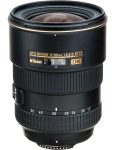
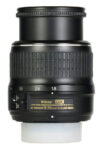
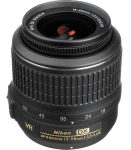
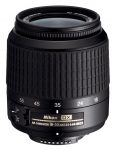
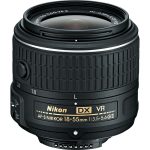
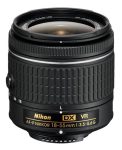
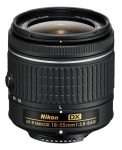
![Sigma 17-50mm F/2.8 EX DC [OS] HSM](https://lens-db.com/wp-content/uploads/2012/07/sigma_17-50_f2-8_os-126x150.jpg)

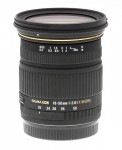
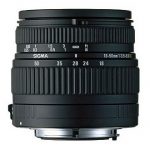

![Tamron SP AF 17-50mm F/2.8 XR Di II LD Aspherical [IF] A16](https://lens-db.com/wp-content/uploads/2012/07/tamron_17-50-117x150.jpg)
